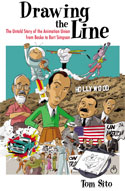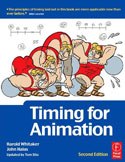|
Sito's Christmas Trivia -2006 Edition December 25th, 2006 |
|

As you sit back in your chair this Christmas –Christ’s Mass ( the biggest holiday of the Ancient Roman World called Saturnalia and the birth of the Persian Sun God Mithras was named the birth festival of Jesus by Pope Leo the Great in 885 A.D. December 25th was also the Feast of Sol Invictus, the Invincible Sun, a cult popular to Romans like Constantine, the first Christian emperor. Modern estimates based on the census records of Augustus and astronomy calculate Jesus' actual birth may have occurred in July although Christians had started to use the Saturnalia as the birthday feast as early as the 300's A.D. ) by your yule log (German Norse custom, the Yule Festival lasting twelve days), wrapping your presents in pretty paper ( Roman Saturnalia custom) with your house all decorated with lights ( Roman New Year custom) under your mistletoe (Druid custom), drinking from your Wassel Bowl (Anglo-German hot beer with toast floating in which is why we "toast" with the words "was-heil"-hail to you. Egg Nog was a drink of Elizabethan sailors which means 'Eggs with Grog".)
You're admiring your Christmas Tree ( besides Druid tree worship, the 24th of December was the feast day of Saints Adam & Eve when Medieval Churches act out the Genesis story and set up a tree representing the "tree of life" with glass balls representing the fruit. Some attribute the idea to Martin Luther and others to a legend about devils trying to undermine the Tree of Life and they succeed at end of the year so decorating a tree helps the Tree of Life grow back. They began to appear in private homes in the mid-1500s. The Christmas Tree custom was taken from Germany to England by Queen Charlotte of Mecklenberg Streilitz, the wife of King George III and to America by Hessian soldiers and later German immigrants in the 1850’s. In an 1883 editorial about the newfangled custom the New York Times called the Christmas Tree-" A rootless, lifeless corpse -unworthy of the Day..", Thomas Edison first strung electric Christmas lights around the tree replacing candles in 1882. Holly bloomed only at this time of year and to Medieval people looked like the Crown of Thorns with the little red berries symbolizing blood droplets. Poinsettas were introduced in the 1850s by the US consul to Mexico, Jacob Poinsetta.
And you dream of a visit from Santa Claus ( a hybrid of Anglo-Dutch customs appearing in it's modern form in New York in the late 1850's. The English form was St. Nicholas, a big jolly Bishop in a red suit and the Dutch had Kris Kringle, the elf who dropped down your chimney and was also known as 'Klaus-in-the-Cinders' or 'Cinder-Klaus". The Welsh had a Druid priest who distributed magic mushrooms wore a red robe with white fur trim. To avoid the more toxic qualities they fed these mushrooms to Reindeer and drank an ale fermented from their urine. yeah, that’s where the Reindeer come from. The first image of him was drawn in 1859 in the New York Sun by cartoonist Thomas Nast for the anonymously published poem “A Visit from Saint Nicholas” attributed to Clement Clarke Moore. Nast also created the Democratic Donkey and Republican elephant. In 1866 Nast originated the idea that Santa was from the North Pole to stop post Civil War squabbling as to whether Santa was a Yankee or a Southerner. The modern Santa Claus image was created for a 1930's Coca Cola ad by illustrator Haddon Sundblom
The song THE TWELVE DAYS OF CHRISTMAS was a secret code from an unknown author in the XVIII Century. From 1558 until 1829, Roman Catholics in England were not permitted to practice their faith openly. Someone during that era wrote this carol as a catechism song for young Catholics. It has two levels of meaning: the surface meaning plus a hidden meaning known only to members of their church. Each element in the carol has a code word for a religious reality which the children could remember.
The partridge in a pear tree was Jesus Christ, don’t ask me why. Two turtle doves were the Old and New Testaments. Three French hens stood for faith, hope and love. The four calling birds were the four gospels of Matthew, Mark, Luke & John. The five golden rings recalled the Torah or Pentatuque, the first five books of the Old Testament. The six geese a-laying stood for the six days of creation. Seven swans a-swimming represented the sevenfold gifts of the Holy Spirit: Prophesy, Serving, Teaching, Exhortation, Contribution, Leadership, and Mercy. The eight maids a-milking were the eight beatitudes. Nine ladies dancing were the nine fruits of the Holy Spirit: Love, Joy, Peace, Patience, Kindness, Goodness, Faithfulness, Gentleness, and Self Control. The ten lords a-leaping were the ten commandments. The eleven pipers piping stood for the eleven faithful disciples. The twelve drummers drumming symbolized the twelve points of belief in the Apostles' Creed. The carol “Silent Night” was composed by Austrian minister Rudolph Scribner in 1848. Rudolph the Red Nosed Reindeer appeared in 1939 in a story by a Montgomery Ward Department Store ad exec named Mayo- Gene Autry the Singing Cowboy recording the famous song.
So here's wishing you hopes for a White Christmas (song written by Russian-Jewish composer Irving Berlin) and a very Happy New Year (courtesy of the 12 month calendar reformed in 45 B.C. by the Hellenic-Egyptian scientist Sosigenes for Julius Caesar, modified by Pope Gregory in 1582 and not accepted by English speaking lands until 1752, else we'd be celebrating New Years in March.- the stubborn Old Believers were called April Fools )
Merry Christmas, Freylich Chaunnakah, Happy Ramadan, Happy Winter Solstice, Happy Washing of the Buddha, Happy Birth of Mithras- who was born in the wilderness and adored by shepards, Io, Io, Saturnalia, Joyeux Noel, Bozego Narodzenia, Frohe Weinacht, Prettig Kerstfeest, Nadolig llawen, Selamat Hari Krismas, Happy Birth of Sol Invictus the Sungod, Happy death and rebirth of Baldur son of Odin, Happy beginning of the rise of Persephone back from Hades to her mother Demeter, and please pass the reindeer pee !
Tom & Pat Sito 2006

|




